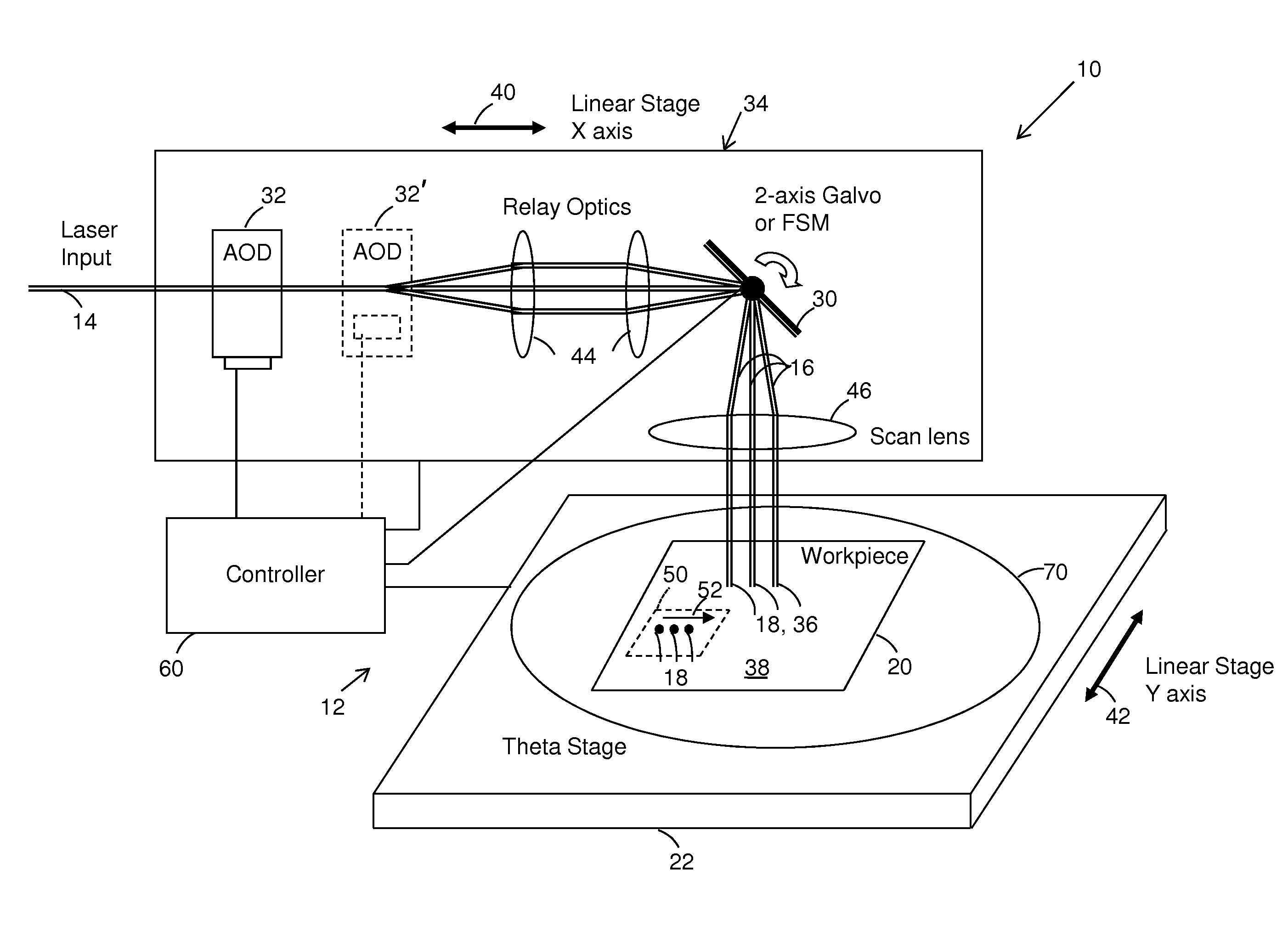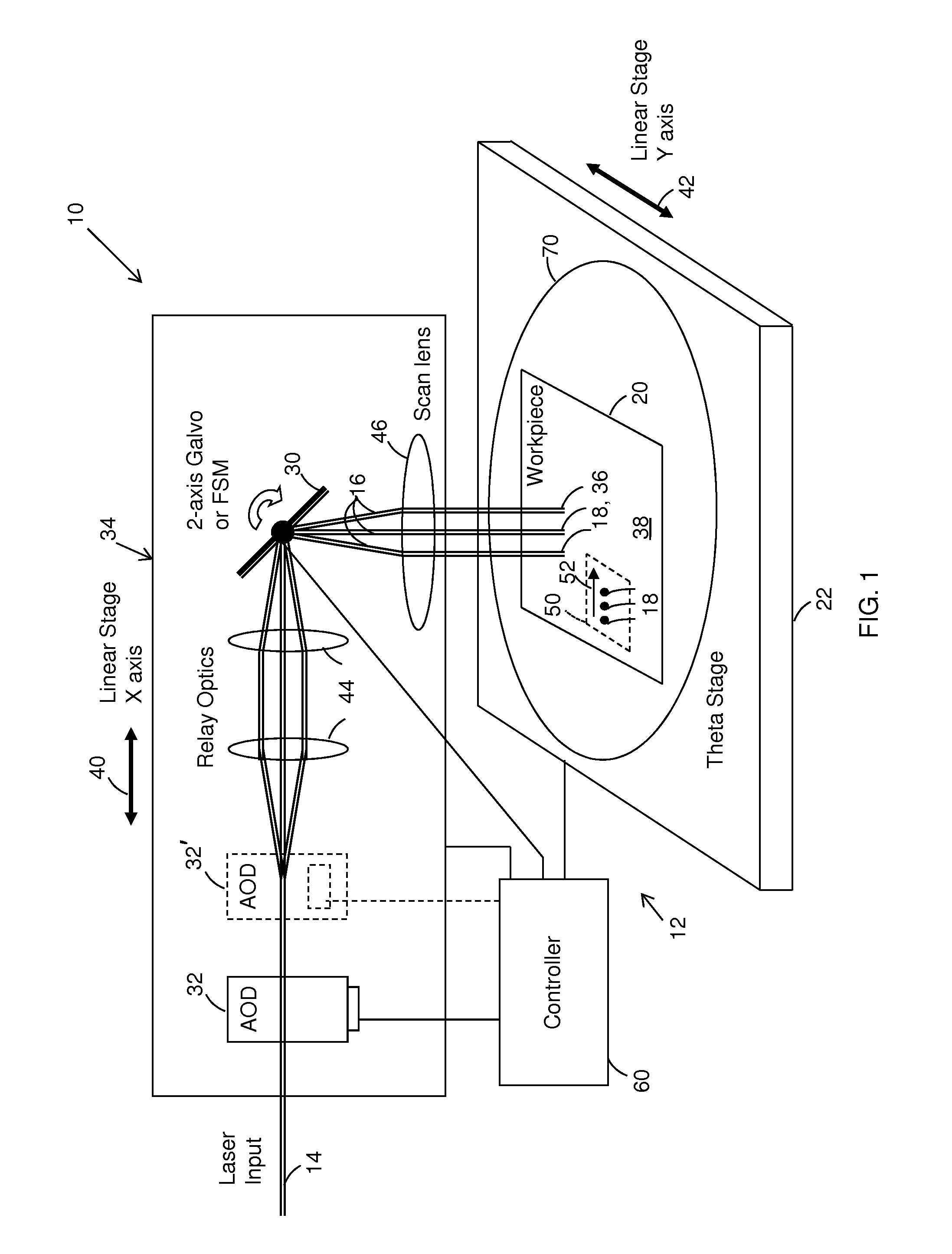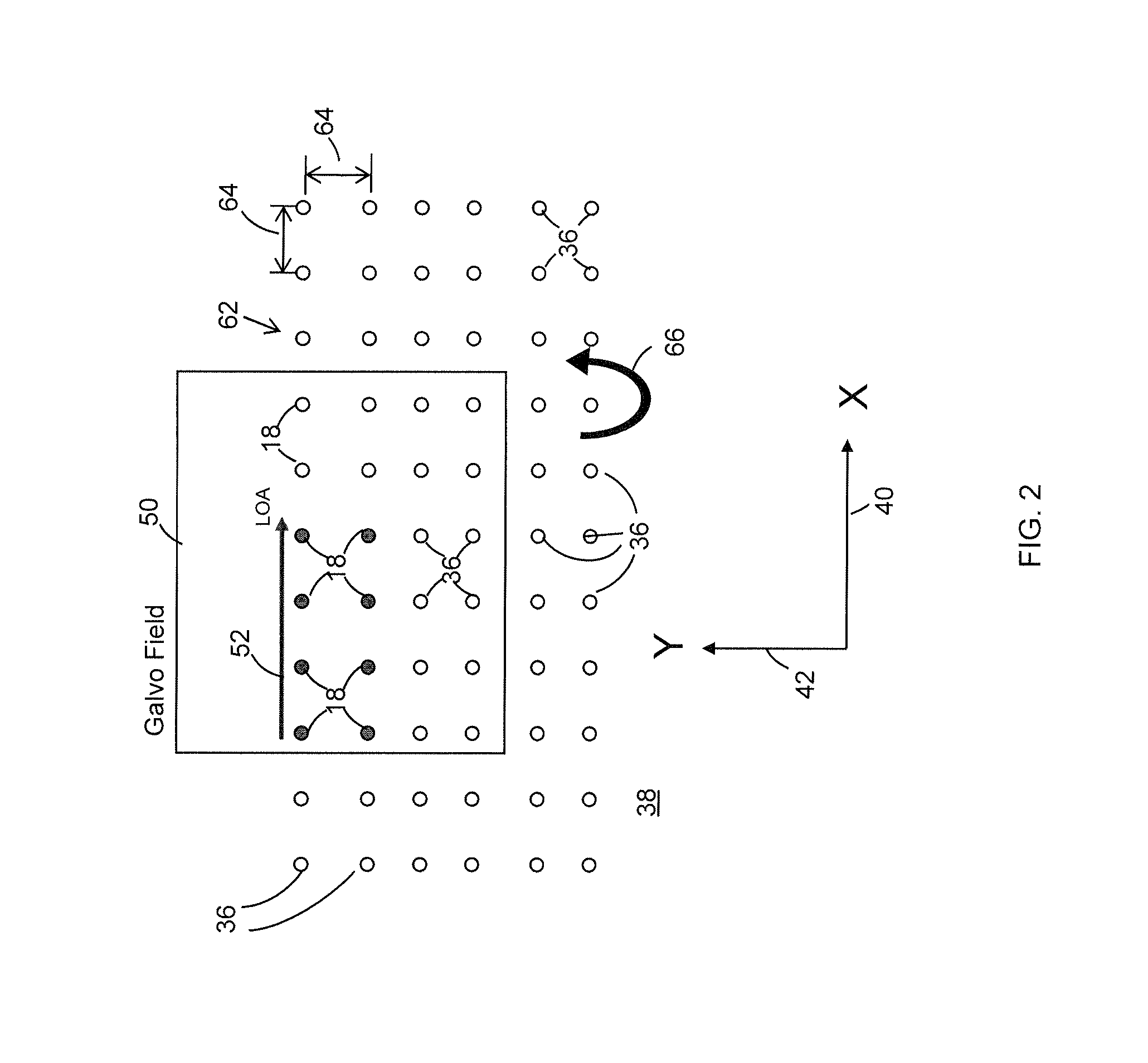Controlling dynamic and thermal loads on laser beam positioning system to achieve high-throughput laser processing of workpiece features
a laser beam positioning system and dynamic load technology, applied in the field of laser processing workpiece features, can solve the problems of reducing the thermal efficiency of moving large (high-inertia) mirrors, affecting the quality of workpiece features, and affecting the accuracy of large lenses, so as to achieve the effect of reducing the inaccuracy and quality degradation of workpiece features
- Summary
- Abstract
- Description
- Claims
- Application Information
AI Technical Summary
Benefits of technology
Problems solved by technology
Method used
Image
Examples
Embodiment Construction
[0018]FIG. 1 shows the hardware architecture of a preferred embodiment of a laser beam positioning system 10 of a laser-based specimen processing system 12. Beam positioning system 10 receives an input laser beam 14 and directs it to form a processing laser beam 16 that processes target features 18 of a workpiece 20 mounted on a support 22. Beam positioning system 10 includes as a first beam positioner a mirror-based beam positioner 30 and as a second beam positioner a zero-inertia optical deflector 32 that cooperate with a movable stage 34 to direct processing beam 16 to process target features 18 at target feature locations 36 on a process surface 38 of workpiece 20. A preferred zero-inertia optical deflector 32 is an acousto-optic deflector (AOD) such as, for example, a Neos 45100-5-6.5 DEG-0.51 one-dimensional deflector, which is available from Neos Technologies, Inc., Melbourne, Fla. Mirror-based beam positioner 30 may be a two-axis fast steering mirror (FSM) or a two-axis galv...
PUM
| Property | Measurement | Unit |
|---|---|---|
| length | aaaaa | aaaaa |
| length | aaaaa | aaaaa |
| length | aaaaa | aaaaa |
Abstract
Description
Claims
Application Information
 Login to View More
Login to View More - R&D
- Intellectual Property
- Life Sciences
- Materials
- Tech Scout
- Unparalleled Data Quality
- Higher Quality Content
- 60% Fewer Hallucinations
Browse by: Latest US Patents, China's latest patents, Technical Efficacy Thesaurus, Application Domain, Technology Topic, Popular Technical Reports.
© 2025 PatSnap. All rights reserved.Legal|Privacy policy|Modern Slavery Act Transparency Statement|Sitemap|About US| Contact US: help@patsnap.com



